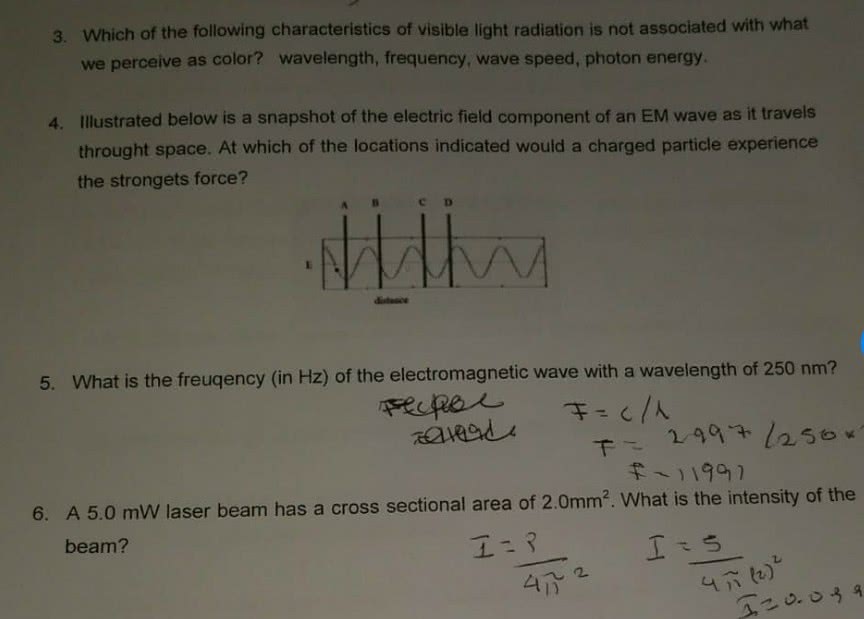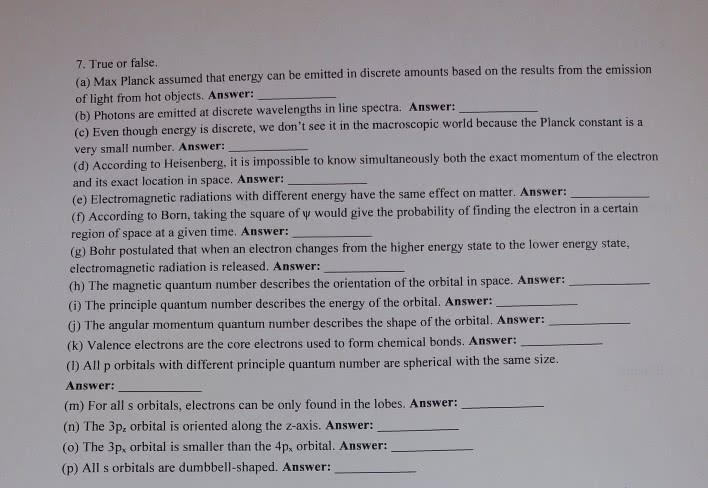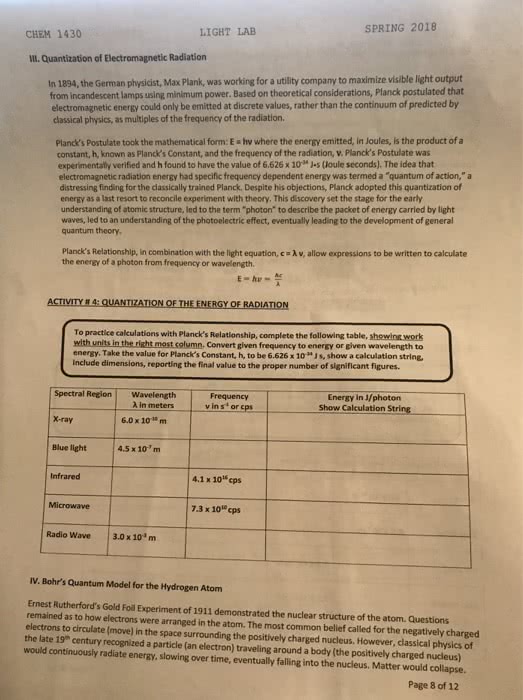CH 101 Chapter Notes - Chapter 7: Radial Distribution Function, Azimuthal Quantum Number, Matter Wave
Document Summary
The quantum-mechanical model explains how electrons exist in atoms and how those electrons determine the chemical and physical properties of elements. Light is electromagnetic radiation, a type of energy embodied in oscillating electric and magnetic fields. An electric field is a region of space where an electrically charged particle experiences a force. A magnetic field is a region of space where a magnetic particle experiences a force. The amplitude of a wave is the vertical height of a crest. The wavelength of the wave is the distance between adjacent crests. Light is also characterized by its frequency, the number of cycles that pass through a stationary point in a given period of time. The electromagnetic spectrum includes all wavelengths of electromagnetic radiation. Waves interact with each other in a way called interference. If two waves of equal amplitude are in phase when they interact, a wave with twice the amplitude results.




